Here's how iOS user interface customization has evolved over the years, before rumors of "fresh apps" and new experiences would hit customizers at WWDC 2022.
Since its launch in 2007, Apple customers have customized their iPhones to a certain degree. The changes are limited to the wallpapers, and are fairly minor. However, it is also the first step in personalizing your device.
After the first version of iOS, the next customization came in iOS 4. This update provides multitasking and the ability to sort apps into folders. Now people can easily return to previous applications, or categorize them.
On May 7, 2012, iOS 5 brought Notification Center to millions of iPhone users. Finally, a way to track application alerts across your system. Users can click on the notification to go directly to the app and take action.
Apple’s release of the iPhone 6 in 2014 resulted in changes to the iOS user interface. This iPhone gives customers a taller screen, providing an extra row of apps. Previous iPhone models were 4.5 inches tall, allowing the display to be easily reached by your thumb.
Next up, iOS 7 is the first update to overhaul the user interface. Jony Ive took over iOS development and introduced the world to flat, minimalist design.
Prior to this, iOS used textures, splicing, glass, and skeuomorphism of 3D buttons and app icons. Former iOS development lead Scott Forstall was in charge during this era.

Apple users get interactive widgets located in Today View in iOS 8. Apps can provide actionable tasks for people to perform. This legacy system still exists in iOS 15, but new free-form widgets are the norm.
With iPhone 6s and iOS 9, Apple introduced dynamic wallpapers that people could set using the new 3D Touch (now called Haptic Touch). At this time, users can also choose to set dynamic live wallpapers.
Live Wallpaper displays an object, such as a fish, that animates for one second when a person presses their lock screen. With a live wallpaper, a bunch of circles move in slow motion in the background.
The release of iOS 12 introduces the Shortcuts app and Siri suggested shortcuts. This is a milestone in customizing and unlocking new ways to interact with Apple devices. Automation can turn routine tasks into time-saving actions.
When iOS 14 was released, Apple borrowed many features from Android. Widgets on the home screen provide app information at a glance, and the App Library automatically organizes your apps.
Custom app icons also allow users to personalize their home screen like never before. Icons can now be color-coordinated with wallpapers.
 Home screen widgets introduced in iOS 14
Home screen widgets introduced in iOS 14Widgets were present on the first Android phone launched in October 2008. This was even before Dashboard, the home of desktop widgets, launched with Mac OS X 10.7 Lion in 2011.
Developers can display various data on widgets, and users can click on one to go directly to the application. It's not yet possible for new free-form widgets to be interactive, such as when a user writes an Apple Note from a Notes widget. This site summarizes the best iPhone widget applications for the home screen.
Another first feature Android has is the ability to set default apps. Apple users only recently got this feature with the release of iOS 14, and it was limited to the Mail and Browsing apps.
In the current version of iOS 15, Apple allows people to customize Safari. Managing browser tabs is now easier, and tab groups let you organize them.
You can control what information is displayed on the start page when you open a new tab in Safari. Privacy reporting, Siri suggestions, and more can be configured. You can also set your wallpaper here.
 Logo for iOS 16
Logo for iOS 16What’s next
Rumor has it that iOS 16 will be identical to its predecessor in terms of user interface. It is said that there will be new ways to interact with the system, as well as widget-like wallpapers on the lock screen.
Some iPad users might even get what they've been asking for: the freely resizable windows that Mac users love. There will also be new accessibility features, one of which is the ability to mirror your Apple Watch display to your iPhone.
In terms of customization, one area that needs improvement might be the default apps. You can choose default apps for email and web browsing. For example, extend categories so people can set defaults for notes, reminders, calendars, music, and more.
More options for dynamic and dynamic wallpapers would be another welcome update. Apple has been removing old wallpapers for years, while others have been there for years.
The release of iOS 16 will definitely bring more options for iPhone customization.
The above is the detailed content of How iOS customization has evolved over time. For more information, please follow other related articles on the PHP Chinese website!
 苹果xs max是几代Nov 03, 2022 pm 04:58 PM
苹果xs max是几代Nov 03, 2022 pm 04:58 PM苹果xs max是苹果第十二代。“X”是罗马数字中的10,“X”代表苹果向iPhone问世十周年的致敬;2017年9月13日,iPhone X正式发布,该产品为苹果第十一代产品;iPhone XS Max是2018年9月13日发布的,为第十二代苹果手机。
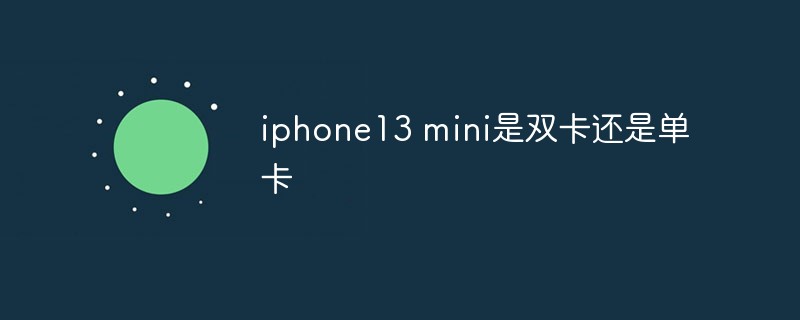 iphone13 mini是双卡还是单卡Nov 22, 2022 pm 05:27 PM
iphone13 mini是双卡还是单卡Nov 22, 2022 pm 05:27 PMiphone13 mini是单卡。iphone13 mini是苹果公司于2021年9月15日发布的一款智能手机,其SIM卡片类型为nano-SIM卡,并不兼容现有的micro-SIM卡,因此不支持双卡模式;该机为5G(sub-6 GHz)全网通手机(支持中国联通、中国移动和中国电信),支持GSM/EDGE、UMTS/HSPA+、DC-HSDPA网络。
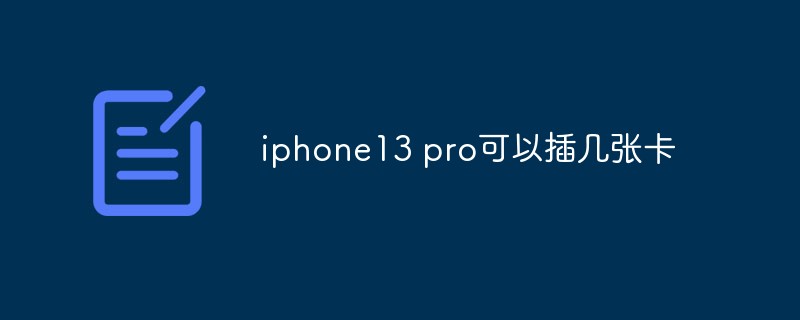 iphone13 pro可以插几张卡Nov 28, 2022 pm 05:56 PM
iphone13 pro可以插几张卡Nov 28, 2022 pm 05:56 PMiphone13 pro可以插2张卡。iPhone13 Pro是苹果公司于北京时间2021年9月15日发布的智能手机,支持双卡双待,支持双卡nano-SIM卡,但不兼容现有的micro-SIM卡;应用双卡要求运用两项移动通信服务,不支持同一时刻使用两项CDMA移动通信服务,且仅部分运营商支持双VoLTE。
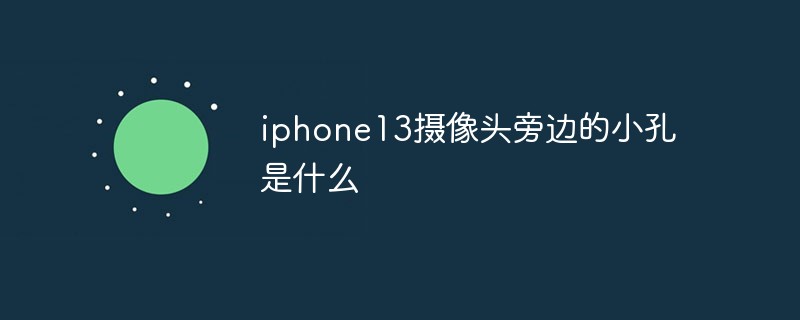 iphone13摄像头旁边的小孔是什么Nov 07, 2022 pm 02:52 PM
iphone13摄像头旁边的小孔是什么Nov 07, 2022 pm 02:52 PMiphone13摄像头旁边的小孔是麦克风,采用双唛降噪设计,是辅助副送话器收音用的,可以用来降低环境噪音和提升通话语音的清晰度的。由于在拍摄视频的时候会由于环境噪音导致被摄主体的收音效果不佳,目前大部分的智能手机都会在机身上设置有多个降噪麦克风,用来录制周围环境的噪音,结合降噪算法,实现降噪效果。
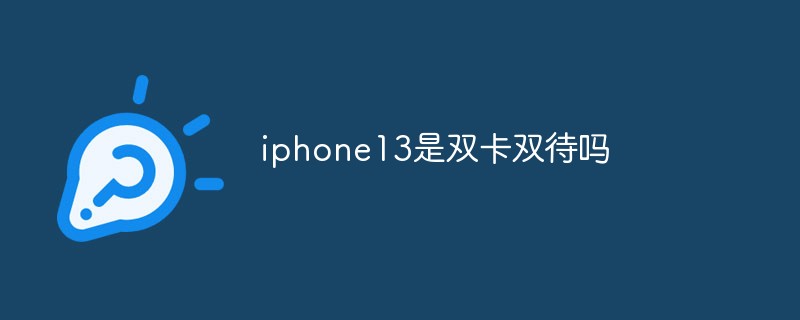 iphone13是双卡双待吗Aug 11, 2022 pm 03:52 PM
iphone13是双卡双待吗Aug 11, 2022 pm 03:52 PMiphone13是双卡双待,iphone13系列中只有“iPhone 13 mini”不是双卡双待;苹果iPhone13支持双卡双待,双卡类型为“nano-SIM”,不支持现有的“micro-SIM”卡,需要正反两面安装SIM卡,一共可以安装两张“12mm*9mm nano-SIM”卡。
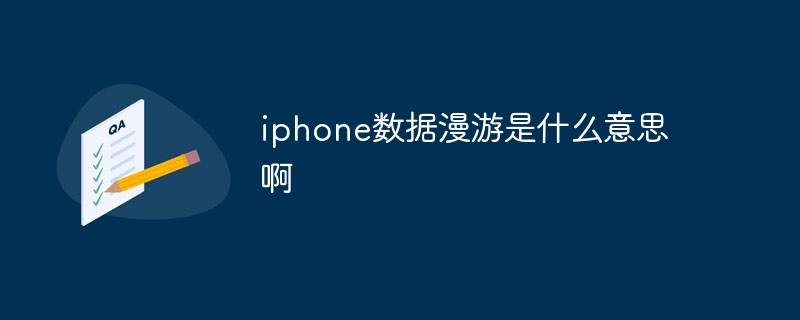 iphone数据漫游是什么意思啊Dec 02, 2022 am 10:52 AM
iphone数据漫游是什么意思啊Dec 02, 2022 am 10:52 AMiphone数据漫游是指iPhone蜂窝网络下的“数据漫游”功能,而数据漫游就是跨运营商的漫游;在国内,该功能无论是打开或者关闭,都是没有任何作用的,因为它只是针对国际上不同的移动运营商起作用。
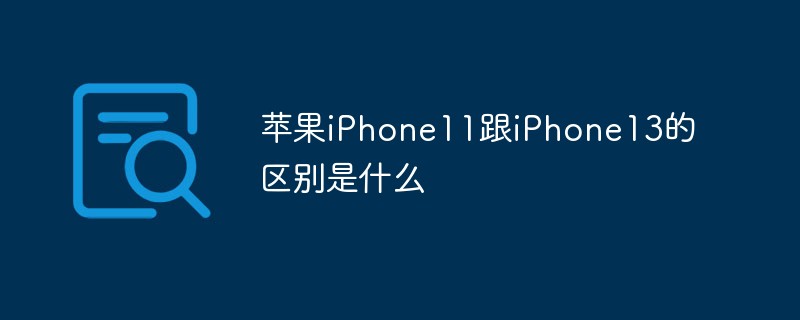 苹果iPhone11跟iPhone13的区别是什么Oct 25, 2022 am 10:35 AM
苹果iPhone11跟iPhone13的区别是什么Oct 25, 2022 am 10:35 AM区别:1、苹果11采用A13仿生处理芯片,具有4核图形处理器和8核神经网络引擎;而13采用采用A15仿生处理芯片,具有4核图形处理器和16核神经网络引擎。2、苹果11屏幕尺寸为6.1英寸Liquid 视网膜高清显示屏;而苹果13屏幕尺寸为6.1英寸超视网膜XDR显示屏。3、苹果11的屏幕对比度为1400:1对比度,而苹果13的屏幕对比度为2000000:1对比度。
 苹果教育优惠版和普通版有什么区别Oct 19, 2022 am 09:17 AM
苹果教育优惠版和普通版有什么区别Oct 19, 2022 am 09:17 AM区别:1、教育优惠比官网标价(普通版)要便宜。2、教育优惠官网下单速度会比普通版慢,普通版有货的状态一般是1-3个工作日就发货了,教育优惠版比较快的也是几天时间,如果是遇到了开学前大量学生购买的高峰期,可能要排队几个星期。3、教育优惠适用人群为准大学生、大学生、教职工(包括大中小学以及特殊教育学校的教职工群体);而普通版的适用人群比较广。

Hot AI Tools

Undresser.AI Undress
AI-powered app for creating realistic nude photos

AI Clothes Remover
Online AI tool for removing clothes from photos.

Undress AI Tool
Undress images for free

Clothoff.io
AI clothes remover

AI Hentai Generator
Generate AI Hentai for free.

Hot Article

Hot Tools

EditPlus Chinese cracked version
Small size, syntax highlighting, does not support code prompt function

Dreamweaver CS6
Visual web development tools

WebStorm Mac version
Useful JavaScript development tools

SublimeText3 Mac version
God-level code editing software (SublimeText3)

DVWA
Damn Vulnerable Web App (DVWA) is a PHP/MySQL web application that is very vulnerable. Its main goals are to be an aid for security professionals to test their skills and tools in a legal environment, to help web developers better understand the process of securing web applications, and to help teachers/students teach/learn in a classroom environment Web application security. The goal of DVWA is to practice some of the most common web vulnerabilities through a simple and straightforward interface, with varying degrees of difficulty. Please note that this software







